What is Oden?
Japanese Oden (おでん) is a one-pot dish (nabemono) made by simmering a variety of ingredients in a light dashi broth. It’s a warming dish that can be enjoyed all year round, but we most commonly eat it in winter.
While Oden has its common and popular ingredients, there is no fixed rule to what you can add. That’s the beauty of Oden!
The broth (dashi) is made from dried bonito flakes and kelp, which is then seasoned and simmered for a long time with ingredients such as fried tofu, a variety of Japanese fish cakes, “suji” (beef strips), boiled eggs, root vegetables, and various others.
The type of oden ingredients and flavored broth varies from region to region and household.
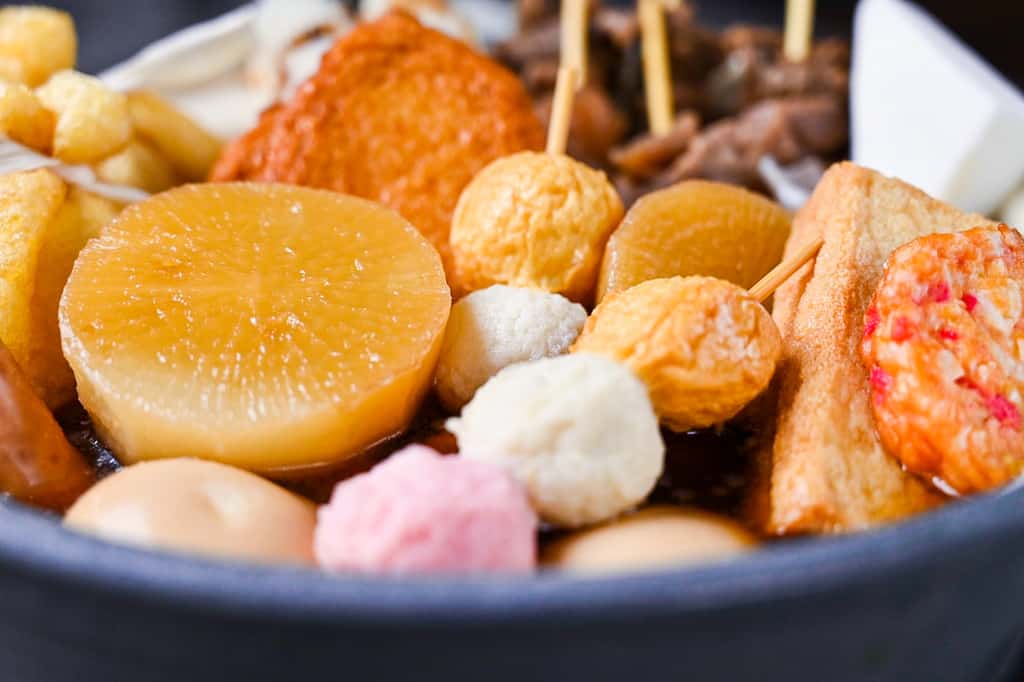

How I Developed This Recipe
It’s not that common in Japan to make oden from scratch. Many families prefer the convenience of buying packets that are already made in supermarkets.
But when I started developing this oden recipe, I decided to go with the from-scratch method, and I have to say, I was surprised. The flavors were so rich, so deep, and so satisfying. It was a real eye-opener.
I finally understood why oden from specialty restaurants tasted so incredible.
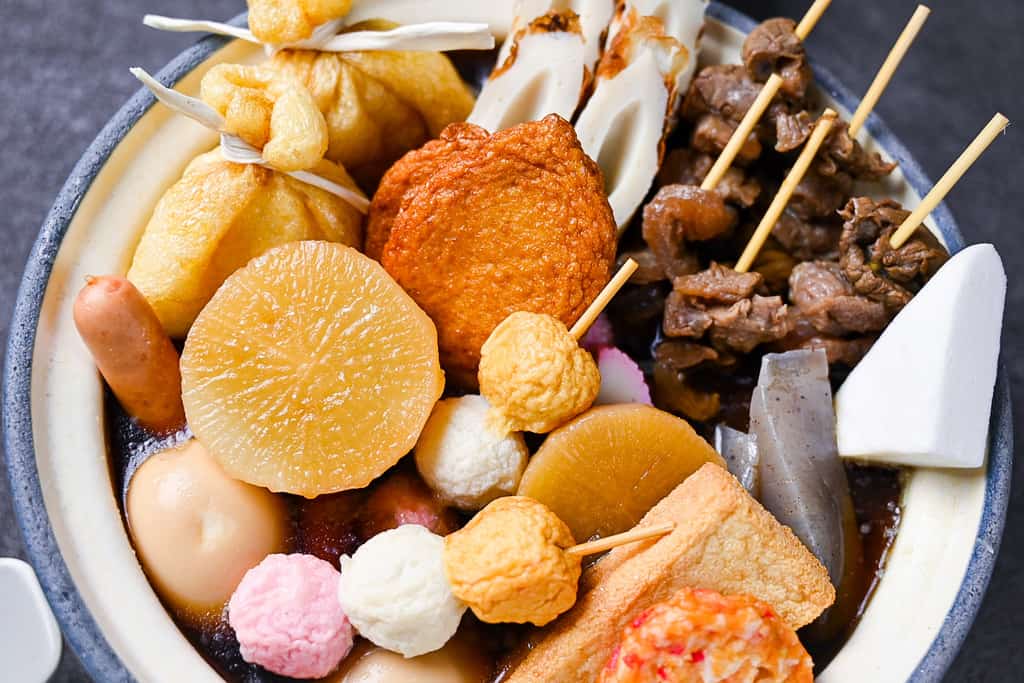
Ingredients & Substitution Ideas
- Dashi Broth: The soul of our soup! You can choose from my go-to homemade dashi, quick and easy awase dashi, plant-based vegan dashi, or for those busy nights, instant dashi granules or dashi packets.
- Sake: Go for unsalted drinking sake for its clean, pure flavor. If you’re short on time, cooking sake is a great alternative. Just remember to adjust your salt levels accordingly.
- Sugar: You can use regular sugar here.
- Mirin: If you want to get that authentic touch, go for “Hon mirin” (本みりん).
- Soy Sauce: For brand recommendations, check out my comprehensive soy sauce guide on the blog
- Oyster Sauce: It adds a wonderful depth and complexity to our soup.
- Beef Tendon: Essential to create the restaurant quality depth! Prepare this collagen-rich cut by simmering it with green onions and ginger.
Examples of ingredients to include in Oden are discussed in more detail in the following sections.
Jump to Full Recipe MeasurementsDaikon Radish
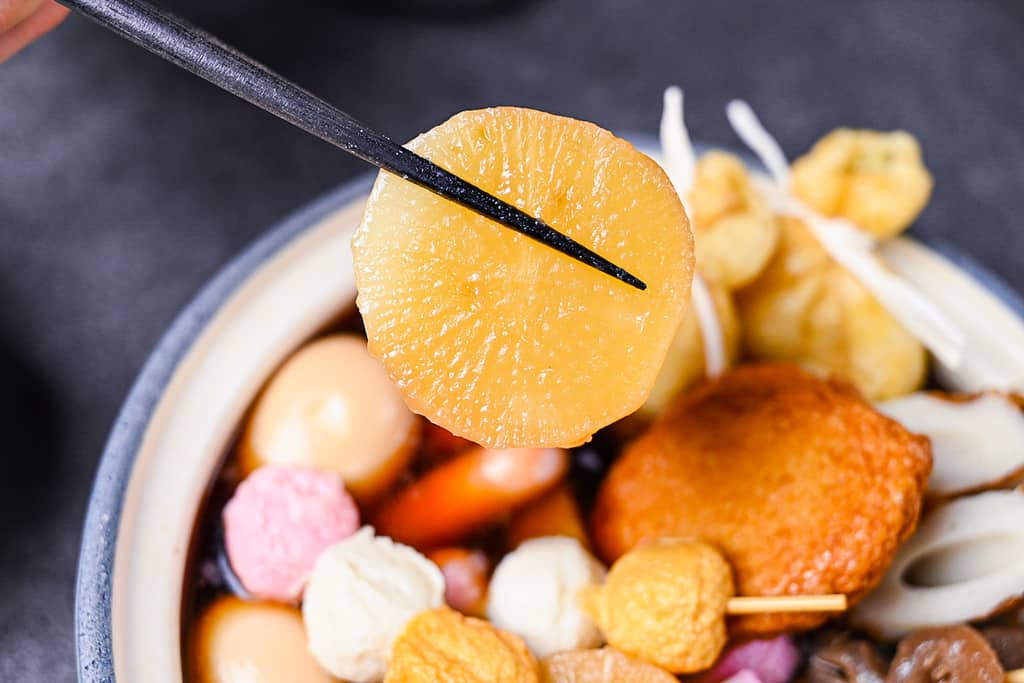
Usually, when daikon is used for oden, it’s peeled and cut into thick slices. They are boiled separately to soften them before use.
A lot of people think Daikon as “the king of Oden”.
Peel the daikon, cut into large slices and make a cross-shaped slit on one side. Then pre-boil them in plain water until they are slightly softened on the outside; you then soak them in cold water until you’re ready to add them to the Oden.
Boiled Eggs
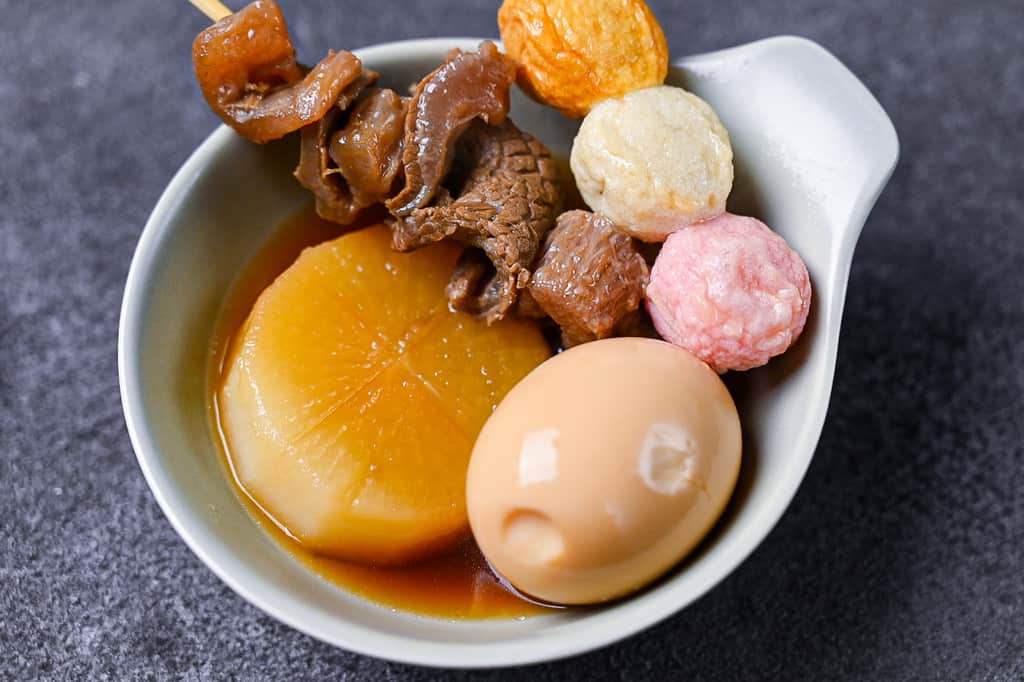
I personally think Oden cannot be complete without boiled eggs. Not only regular chicken eggs but also quail eggs can be seen in Oden! Boil the eggs and peel the shells first before adding them to the broth. When they’re added to the oden, they absorb the flavor of the broth and take on a light brown color.
Hard boil the eggs before adding them to the oden broth.
Konnyaku
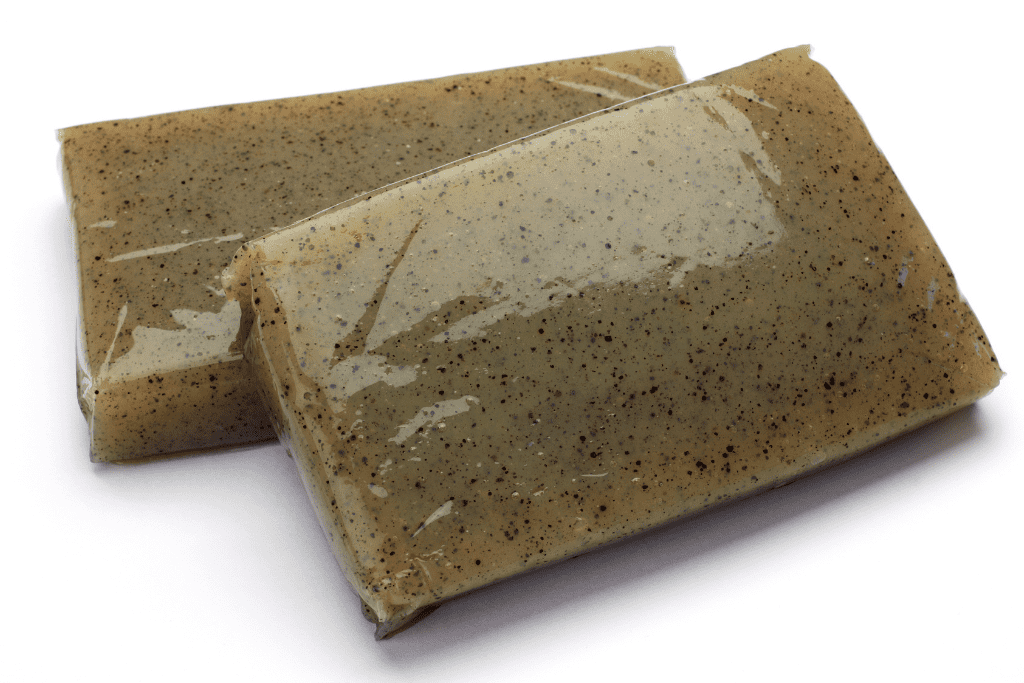
Konnyaku is a unique Japanese ingredient made from konjac potatoes. The texture is almost like a hard jelly. When used for oden, it’s boiled first to remove the odor before using.
Score with a criss-cross pattern on the surface (both sides). Boil separately to remove any unwanted odor, and then add it to the Oden broth early on to absorb maximum flavor.
Shirataki
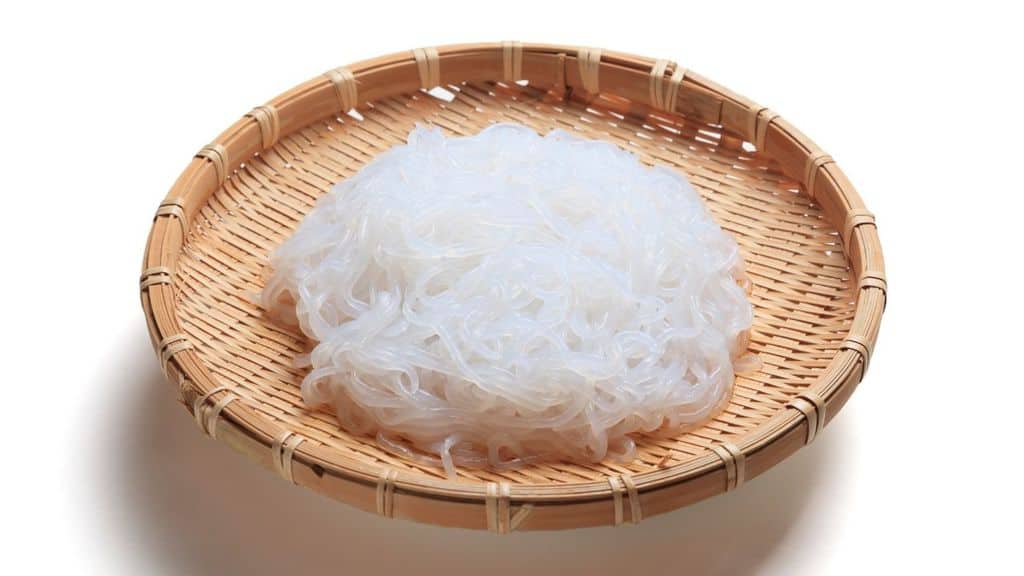
These white/translucent noodles are also a type of konnyaku! As an Oden ingredient, it’s tied into a knot to make it easier to eat.
Rinse the shirataki with cold water and then tie it into bundles before adding it to the Oden broth.
Kinchaku
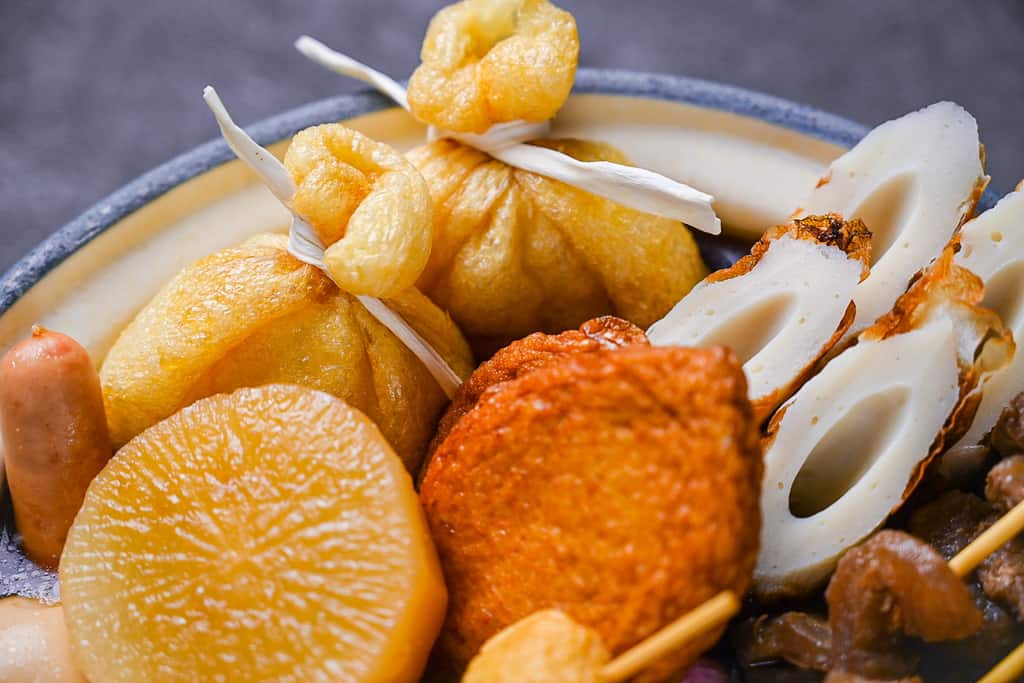
Kinchaku (巾着) is a small traditional bag made of cloth or leather with a drawstring at the top.
However, in the food context, kinchaku is a food made by putting ingredients such as mochi (rice cakes) inside fried tofu and binding the knot with an edible dried gourd we call “kanpyo.” Alternatively, sometimes kinchaku is sealed with a cocktail stick.
It can also be called fukuro (short for kinchaku bukuro).
Atsuage Tofu
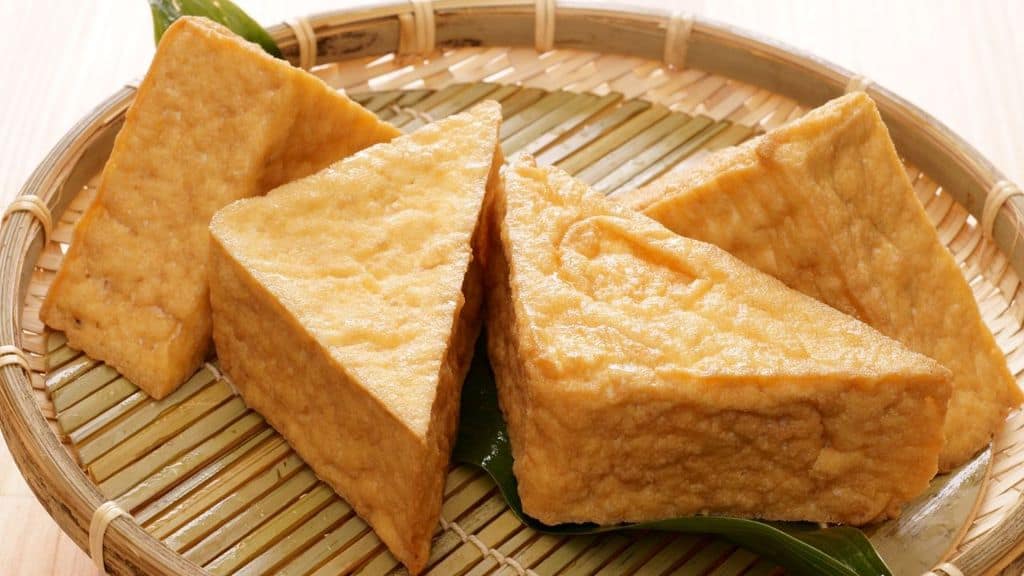
Atsuage is a type of tofu made by cutting tofu into thick slices and deep-frying them in oil. Unlike aburaage, it is not fried enough to keep the inside of the tofu intact, so it is also called “namaage.”
Professionals would remove the excess oil in the Atsuage by boiling water first, then cook in the Oden broth.
Boil atsuage separately for about 2-3 minutes to remove the oil on the surface and then add it to the broth. Doing this will keep the broth will be clean and clear.
Chikuwa
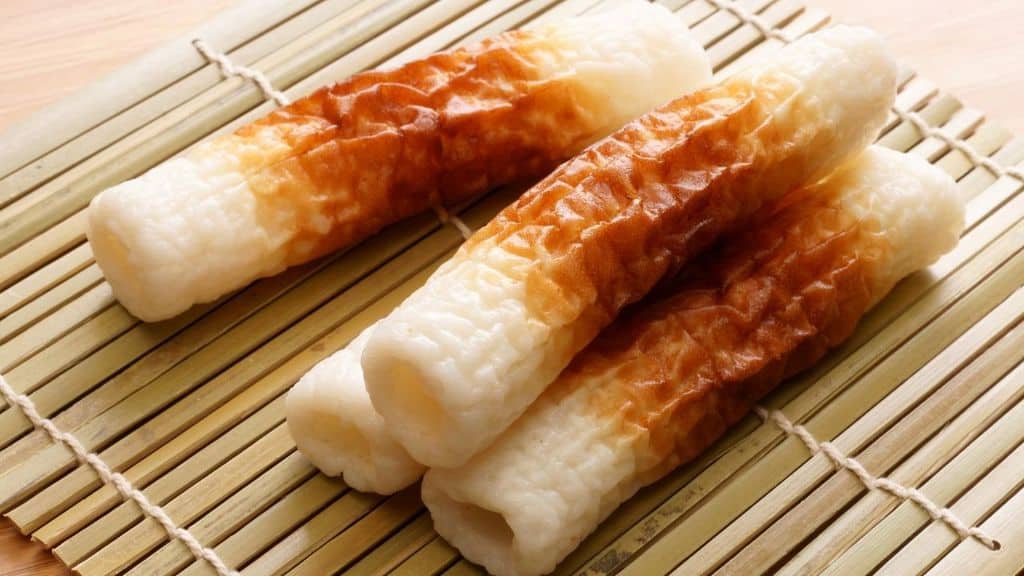
Chikuwa is a popular Japanese food made by wrapping white fish paste around a bamboo or iron rod and baking it. It is thought that the original form of kamaboko was this type of chikuwa.
As for Oden, different types of chikuwa can be seen depending on the region.
Ganmodoki
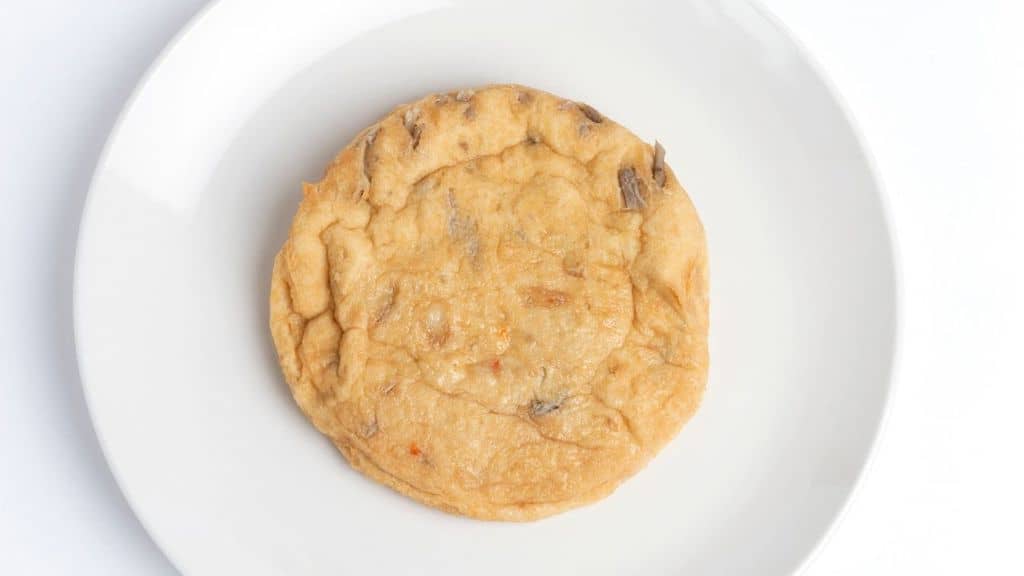
Ganmodoki is a type of fried tofu. It is made from tofu drained and crumbled, then mixed with yams and eggs as a binder. Ingredients such as finely chopped burdock root, carrot, hemp seeds, kombu, etc., are added to the mixture and then rolled into a disk shape and deep fried.
It’s often called “Ganmo” for short.
Boil them separately for about 2-3 minutes to remove the oil on the surface. By doing this, the broth will keep clean and clear.
Gyusuji (beef sinew)
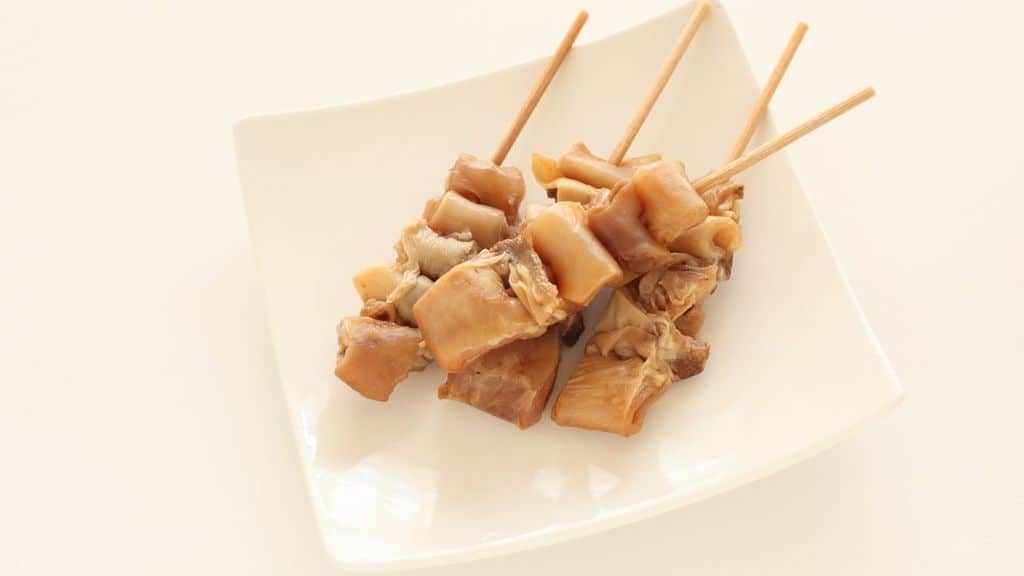
My all-time favorite!
Gyusuji is a general term for meat with sinews, such as the Achilles tendon and the shank. In Oden, it refers to slow-cooked beef sinew on skewers. This ingredient requires the most preparation, but adding gyusuji to oden makes a huge difference to the broth and wouldn’t be the same without it!
It is mostly found in western Japan.
Boil the gyusuji separately to remove excess fat, slow cook it in broth, put it on a skewer, and then add it to the oden broth.
Hanpen
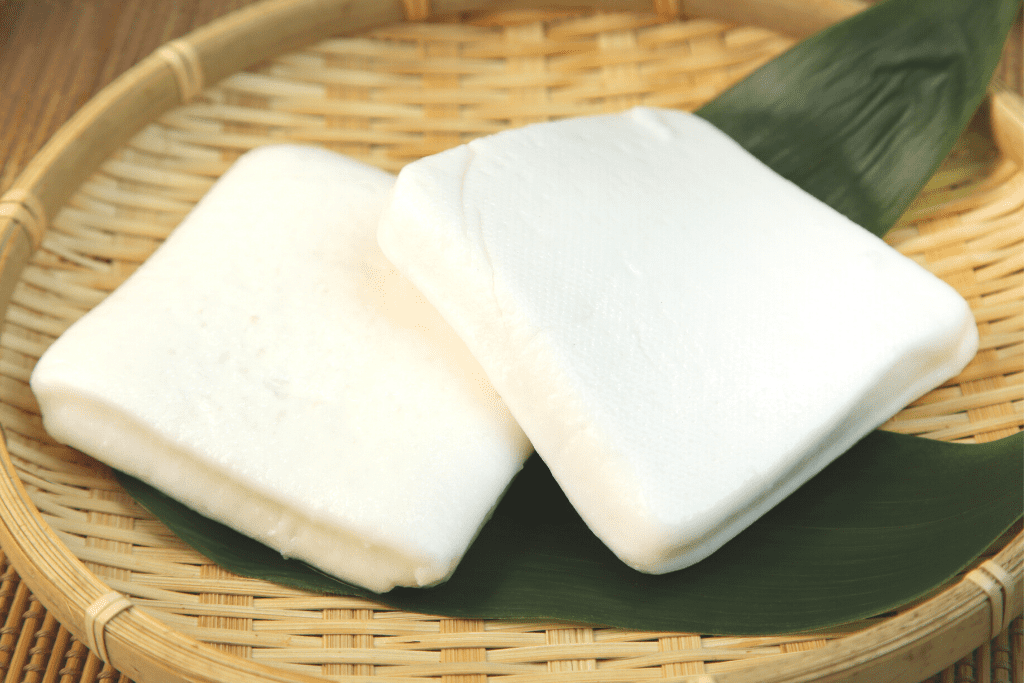
Hanpen (半片) is yet another kind of fishcake. This white one is made from Alaskan pollock surimi (paste), grated yam, and kombu dashi. It is usually cut into triangles and eaten in oden or soup. The texture is soft and spongy, a bit like bread. This unique quality makes it a bit different from the usual fishcakes.
Cut into triangles.
Ingredient Examples Outside of Japan
While many ingredients used in Oden are unusual and difficult to find outside of Japan, that doesn’t mean you can’t make it at home! There is no fixed rule for what ingredients you add, and there are plenty of options for everyone. Here are some of the most accessible Oden ingredients to choose from.
- Boiled eggs (chicken or quail)
- Firm tofu
- Potato
- Carrots
- Tsukune (Japanese chicken meatballs on a skewer)
- Tsumire (Japanese fishballs)
- Rolled cabbage (seasoned pork wrapped in cabbage)
- Boiled octopus
- Hot dog sausages
Feel free to add your local ingredients to your Oden party!
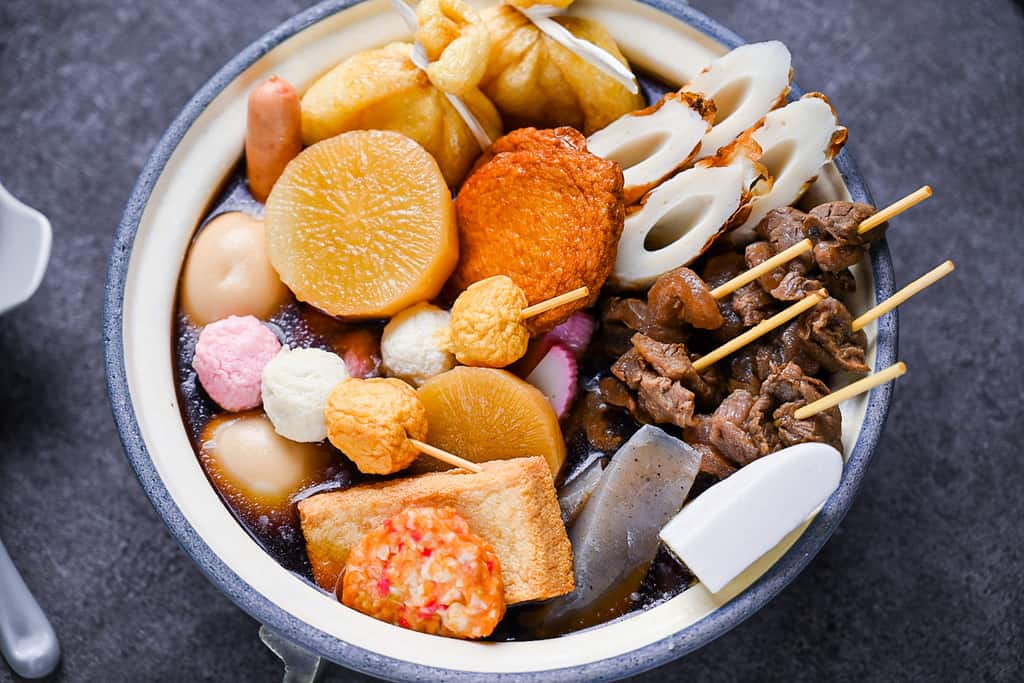
Visual Walkthrough & Tips
Here are my step-by-step instructions for how to make Japanese Oden at home. For ingredient quantities and simplified instructions, scroll down for the Printable Recipe Card below.
Bring a pot of water to a boil and add beef sinew. Boil for a few minutes to remove excess fat and scum.

After a few minutes, drain the sinew in a colander and rinse it under clean running water.
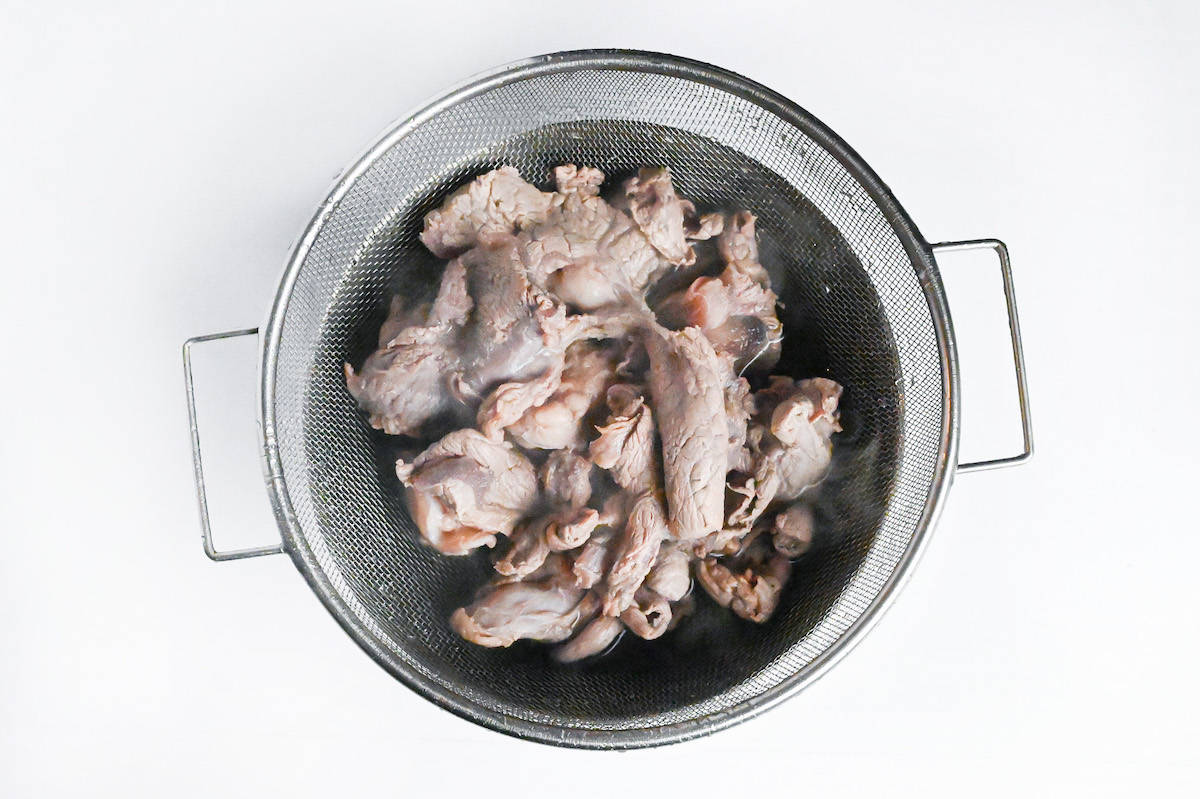
Refill the pot with about 1000 ml of water, or enough to cover the beef by 1-2 cm. Bring it to a boil.

While waiting for the water to heat, cut the beef sinew into strips.
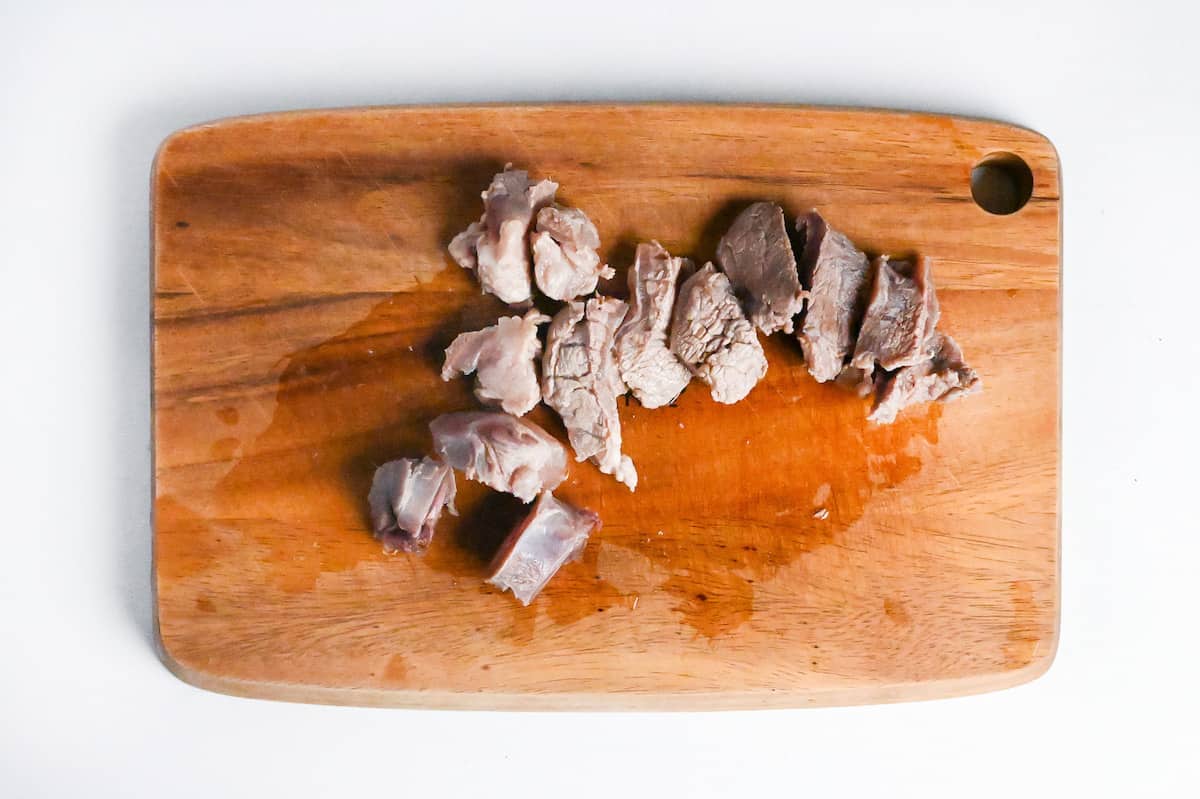
Once boiling, reduce the heat to a simmer. Add green onions, fresh ginger, and the beef sinew strips. Simmer for 1 hour without a lid, adding water as necessary to keep the beef submerged.
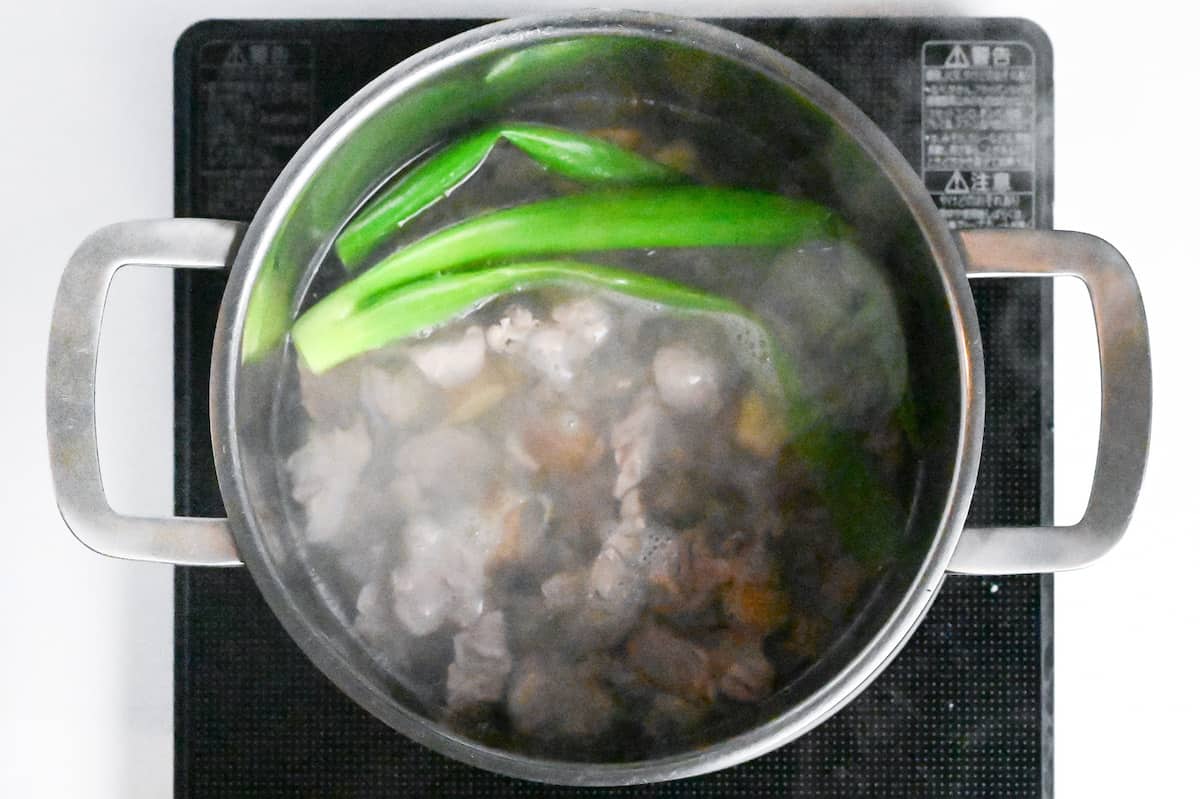
After an hour, remove the beef sinew and set it aside to cool. Discard the green onion and ginger but keep the broth. Continue to simmer the broth until reduced by one-third.
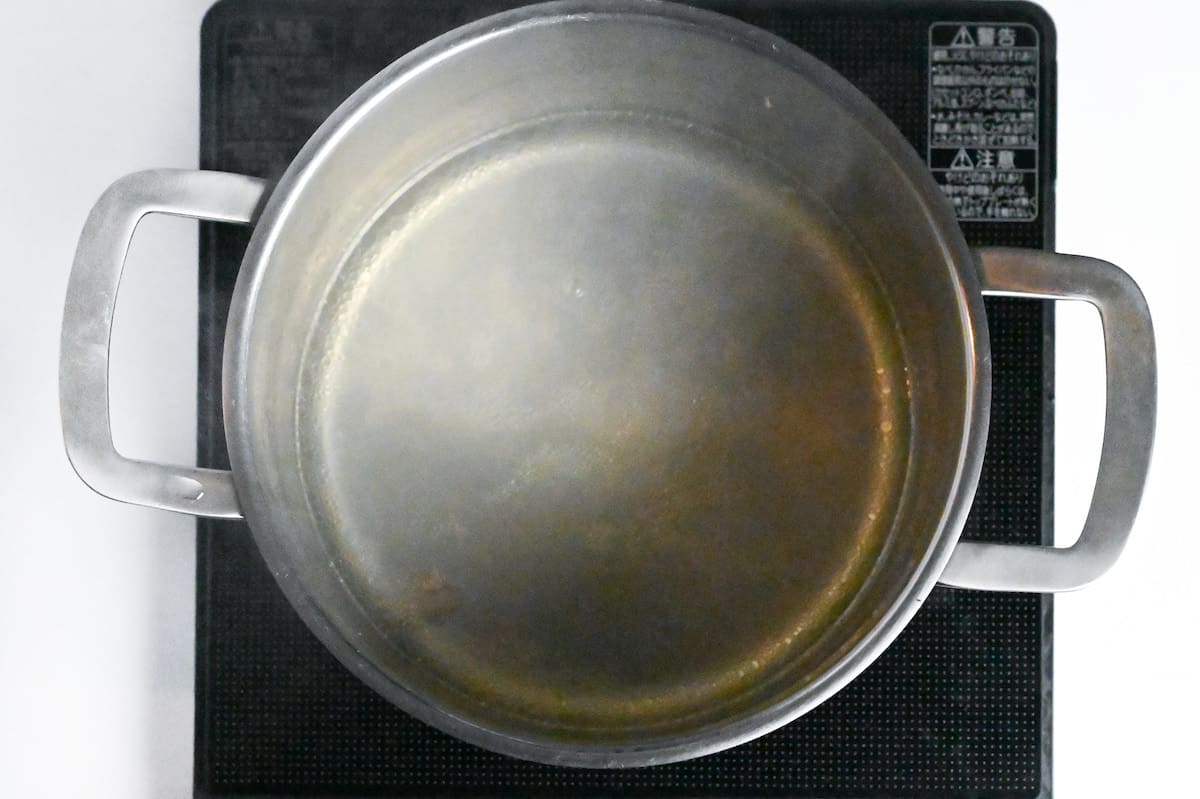
When the beef is cool enough to handle, skewer the pieces.
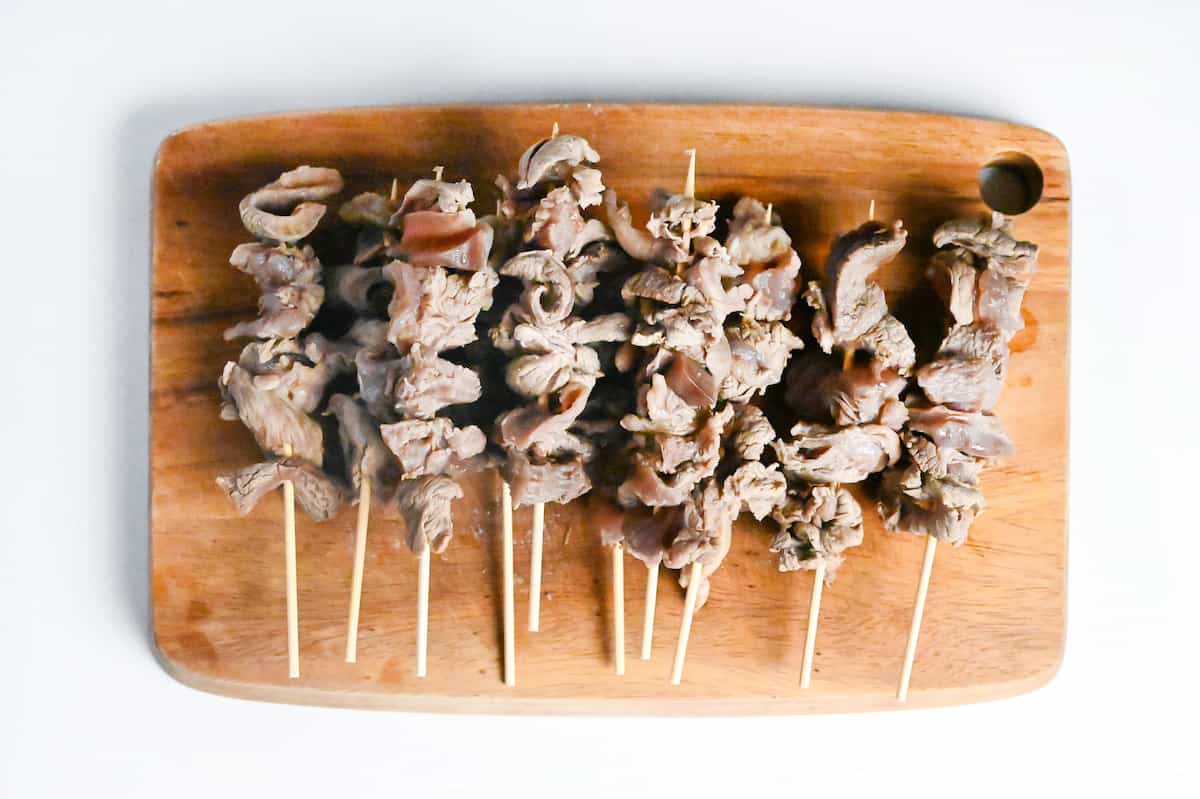
Peel 300 g of daikon radish and cut into thick rounds. Score one side with a cross about 1cm deep.
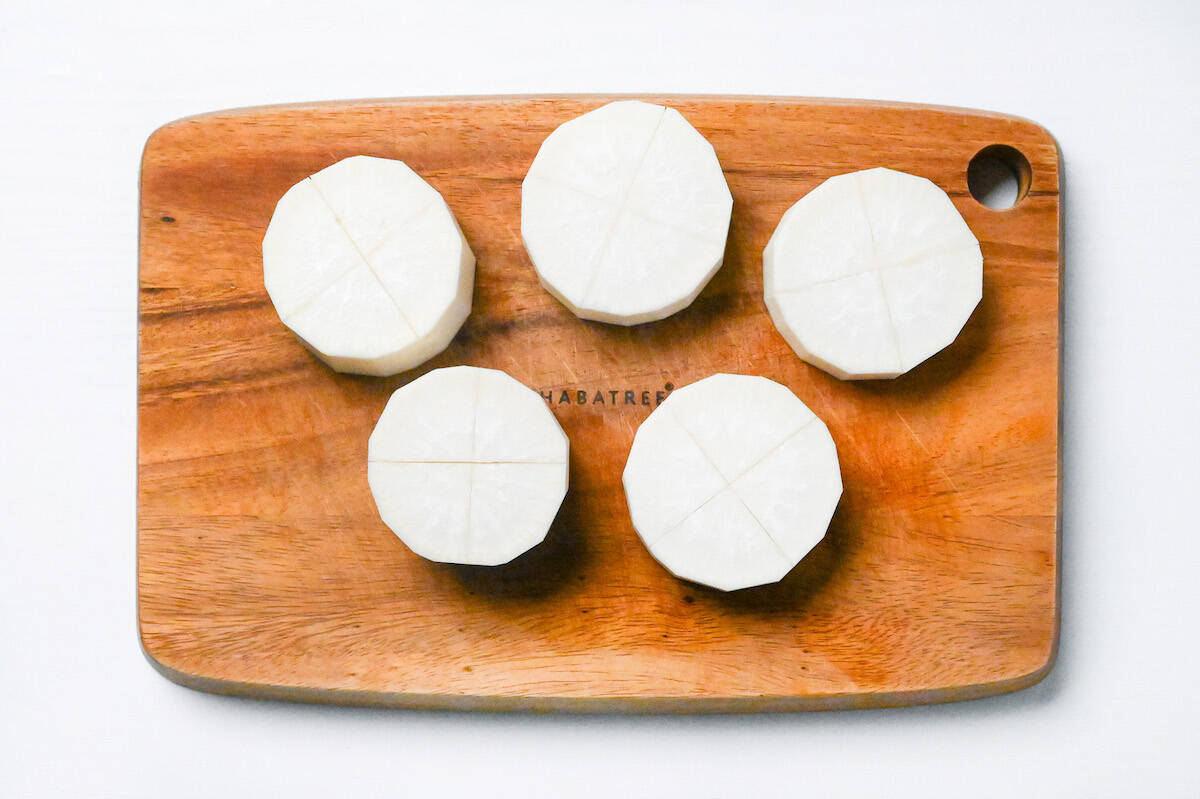
Boil the daikon in a separate pot until it’s easy to pierce, about 15 minutes.

In a large pot, combine dashi stock and some of the leftover broth from the beef sinew. Add sake, sugar, mirin, soy sauce, and oyster sauce. Bring to a boil and let it boil for 2-3 minutes.
Reduce the heat to a simmer. Add the daikon, boiled eggs, and beef sinew skewers. Also, add any other firm ingredients at this point.
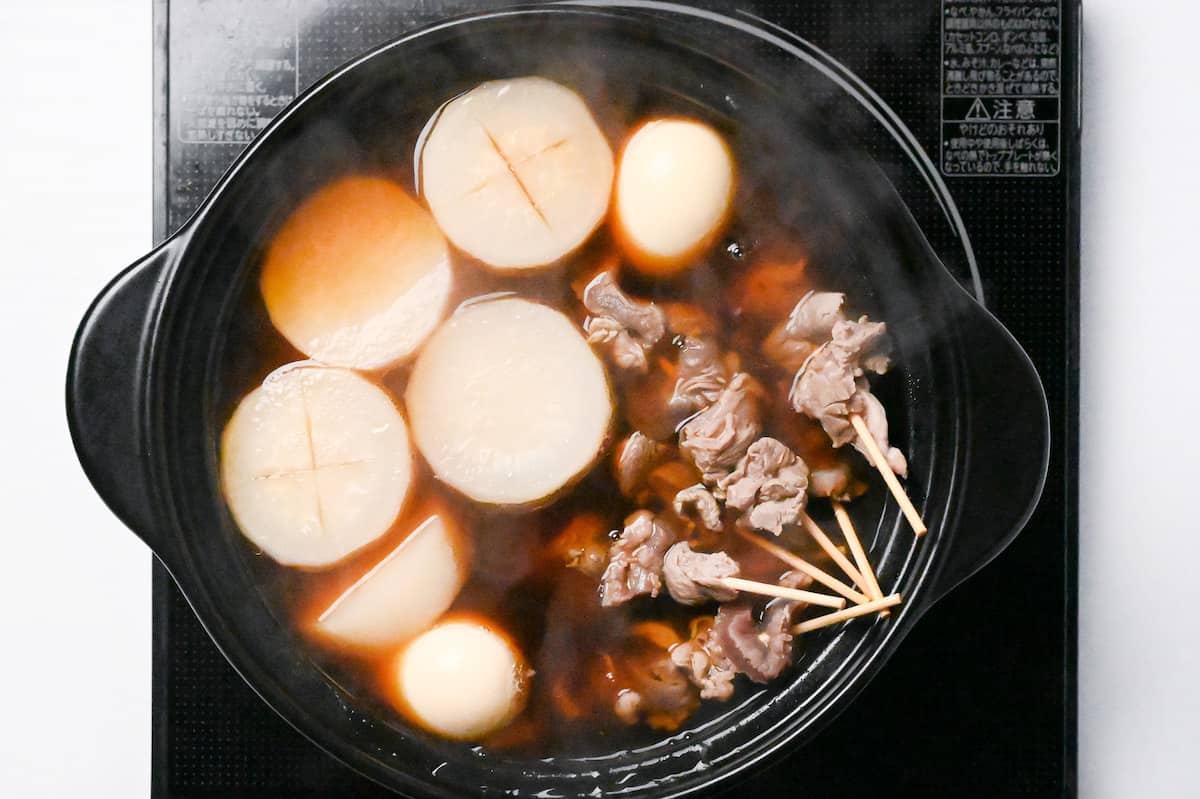
Simmer for about 30 minutes before adding fishcakes, atsuage tofu, and any other soft ingredients of your choice. Simmer for another 15 minutes.
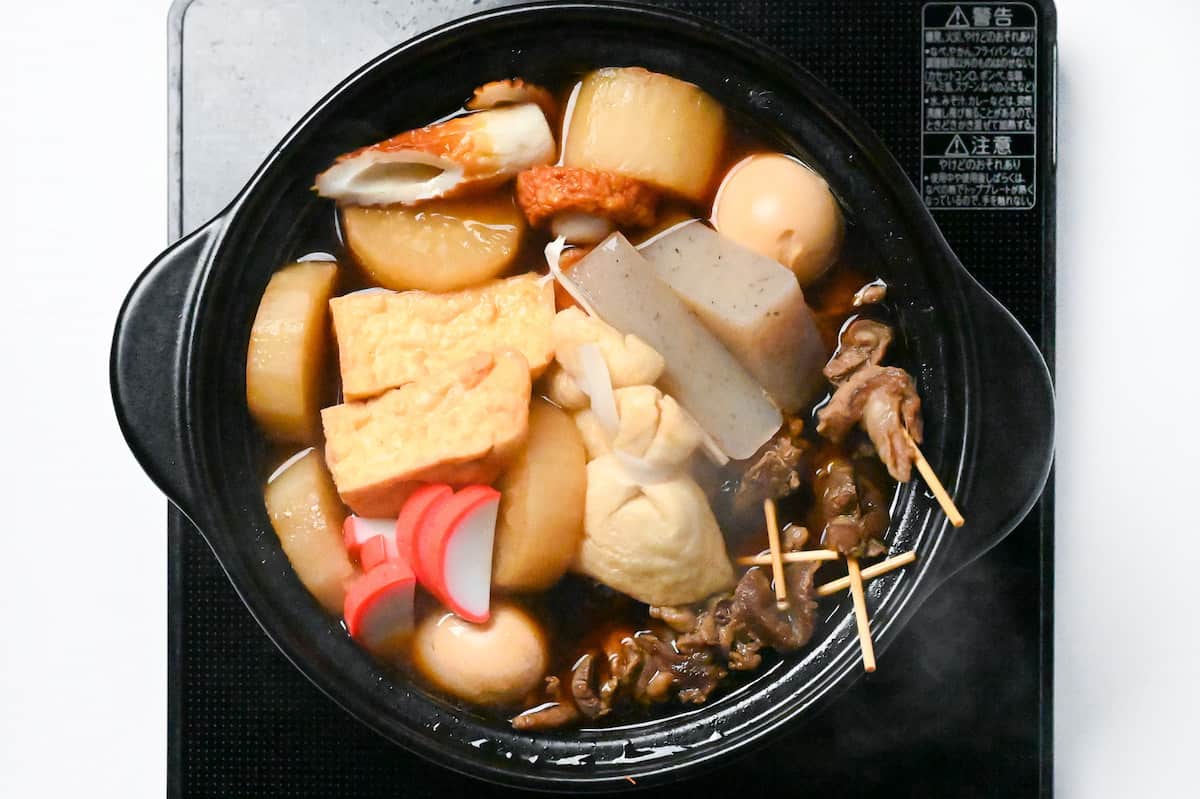
Tips & Tricks
- No Strict Rules: There are many ways to make Oden even within Japan, so don’t worry too much about what goes in! Feel free to be creative and use your local ingredients that you think go well!
- Avoid Overcooking Fish Cakes: Try not to overcook fish cake type ingredients.
- Start with Hard Ingredients: Begin with ingredients that take the longest to soak up the flavor, like daikon and boiled eggs.
- Add Tofu and Fishcakes Later: To prevent them from becoming soggy and heavy.
- Variety is Key: The wider the variety of ingredients, the better the Oden will be.
- Use Low to Medium-Low Heat: To prevent the broth from bubbling and ingredients from breaking.
- Timing is Crucial: Know when to start eating to ensure all ingredients have absorbed enough flavor.
- Simmer for 45 Minutes: Allow hard ingredients to simmer for about 30 minutes, then add other ingredients and simmer for another 15 minutes.
- Day Two Oden Tastes Better: The broth becomes deeper, and the ingredients absorb more flavor on the second day.
- Prepare in Advance for Day Two Taste: Simmer hard ingredients for 30 minutes, cool, add other ingredients, and refrigerate overnight.
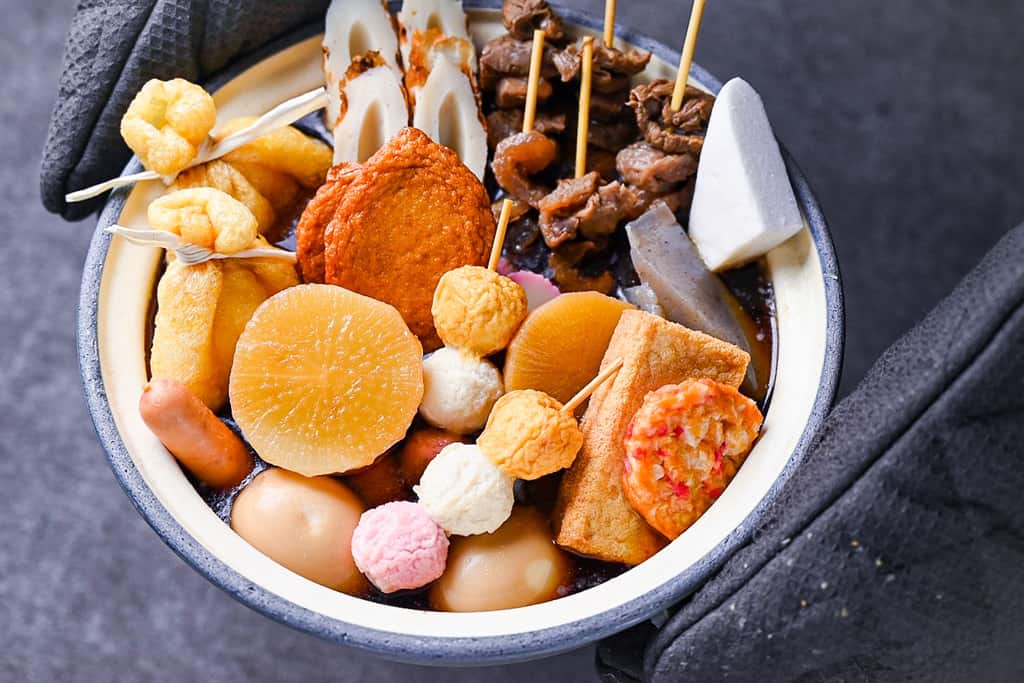
I hope you enjoy this Oden recipe! If you try it out, I’d really appreciate it if you could spare a moment to let me know what you thought by giving a review and star rating in the comments below. It’s also helpful to share any adjustments you made to the recipe with our other readers. Thank you!
More Japanese Hot Pot Recipes
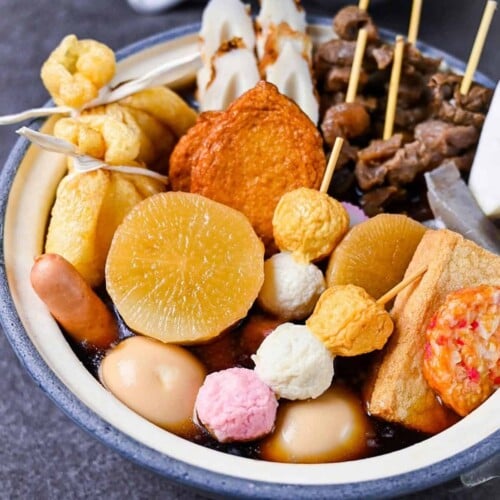
Oden (Japanese Winter Stew)
Ingredients
Gyusuji
- 500 g beef tendon (sinew)
- water for boiling
- 1000 ml water for broth
- 1 Japanese leek (naganegi) green part
- 20 g ginger root
Oden soup
- 1 liter dashi stock I recommend my favorite homemade dashi stock
- 2 tbsp sake
- ½ tbsp sugar
- 3 tbsp mirin
- 5 tbsp Japanese soy sauce (koikuchi shoyu)
- 1 tbsp oyster sauce
Basic Ingredients (more mentioned in post)
- 300 g daikon radish
- 4 boiled egg
- fishcakes of your choice see in post
- deep fried tofu (atsuage) or firm tofu
- Japanese mustard (karashi) optional
My recommended brands of ingredients and seasonings can be found in my Japanese pantry guide.
Can’t find certain Japanese ingredients? See my substitution guide here.
Instructions
Gyusuji
- Bring a pot of water to the boil and add 500 g beef tendon (sinew). Boil for a few minutes to remove the excess fat and scum.

- After a few minutes have passed, pour the sinew into a colander to drain and wash the beef sinew under clean running water.

- Fill the pot again with approximately 1000 ml water (or enough to cover the beef by 1-2cm) and bring it to a boil.

- While you wait for the water to heat up, cut the beef sinew into strips.

- Once boiling, turn the heat down to simmer and add 1 Japanese leek (naganegi), 20 g ginger root and the beef sinew. Simmer for 1 hour without a lid. (Add more water when necessary to ensure the beef is always submerged.)

- After one hour, remove the beef sinew and set it aside to cool. Discard the spring onion and ginger but save the broth. Continue to simmer the broth without a lid until reduced by one-third.

- When the beef is cool to the touch, push the pieces onto skewers. (Approximately 100g per skewer)

Prepare the Daikon
- Peel the skin of 300 g daikon radish and cut into thick rounds. Score one side with a cross, about 1cm deep.

- Boil in a separate pot until it's easy to pierce (about 15 minutes).

Oden
- Take a large pot and add 1 liter dashi stock and 100ml of the leftover broth from the beef sinew. Add 2 tbsp sake, ½ tbsp sugar, 3 tbsp mirin, 5 tbsp Japanese soy sauce (koikuchi shoyu) and 1 tbsp oyster sauce to the broth. Bring it to a boil and let it boil for 2-3 minutes.

- Turn the heat down to simmer and add the daikon, 4 boiled egg and gyusuji skewers. (You should also add any other firm ingredients at this point.)

- Simmer for about 30 minutes and then fishcakes of your choice, deep fried tofu (atsuage) and any other soft ingredients you choose. Simmer for another 15 minutes.

- Serve up and enjoy with Japanese mustard (karashi).
Notes
- Allow leftovers to cool and store in the refrigerator. Warm up on the stove before eating and consume within 2 days.
- Note: While the nutritional information includes the full serving of broth, most people in Japan don’t actually finish all the soup.



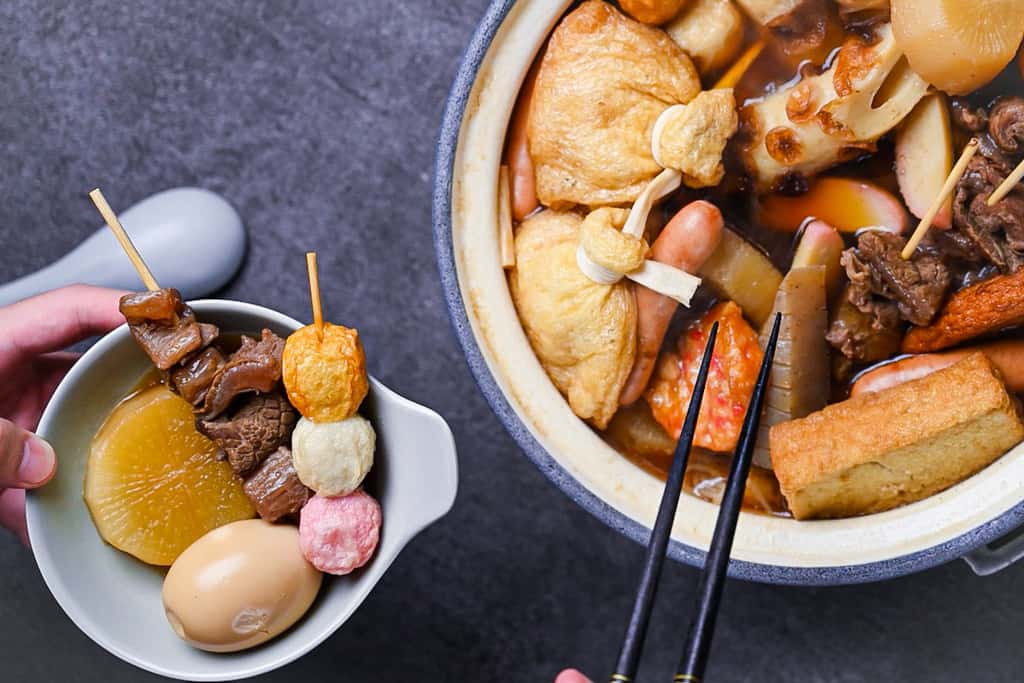

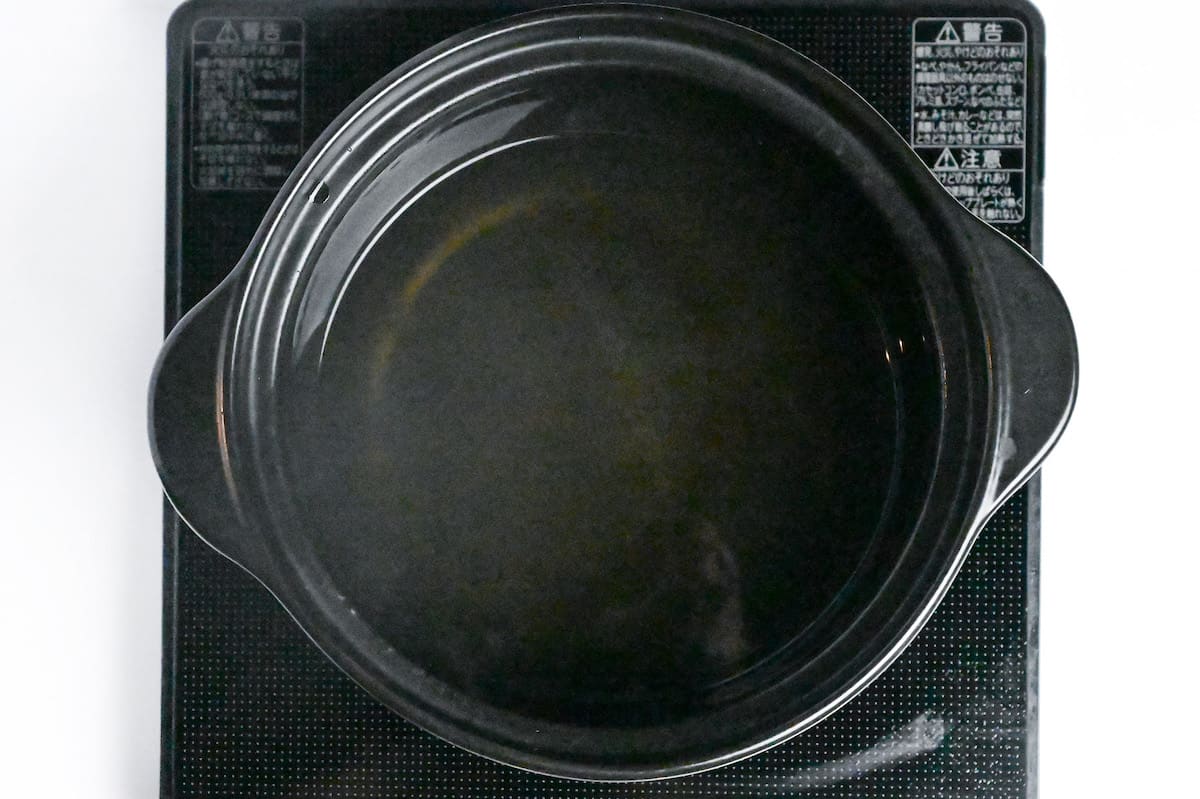
Leave a rating and a comment